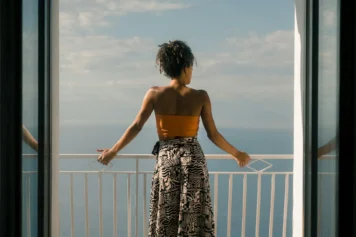MEADS BAY, Anguilla, British West Indies — OK, there may have been a moment of panic as I steered the white rental car out of the parking lot.
I have plenty of experience behind the wheel in countries whose British heritage compels them to drive on the left side of the road, and I’ve been fine. My basic rule of conversion: The driver is on the side of the vehicle nearest the center of the road. But my car’s steering wheel was on the left side, which meant I was driving on the shoulder side. The problem: so was the person steering the car coming at us head-on. He was sitting where the passenger should be. For although Anguilla is British in tradition, cars from America are less expensive to buy and transport.
But instead of a collision or even an angry horn, the driver simply pulled to his left and waved me by with a genial, understanding smile.
On Anguilla, they do things differently.
First, it’s pronounced, “An gwill a,” not “An gwee a,”although the name is derived from the French or Spanish word for eel. That’s an apt description for this narrow, 16-mile-long, sand-fringed spit of limestone and sand that squirms its way along the Caribbean’s northeast shoulder.
Although Anguilla lies only a few miles north of the spine of old volcanoes that is St. Maarten, this most northerly of the Leeward Islands maintains a low profile, nowhere rising higher than 215 feet above the azure seas around it.
Somewhat arid and not particularly fertile, scrubby with no forests or natural resources to exploit, the island was of no interest to early Spanish explorers. An English settlement was established in 1650, and despite being ravaged several times over the next three centuries by various calamities, the island remained a British colony, albeit one relatively low on the scale of importance.
Ironically, because large plantations weren’t practical, Anguilla never saw the mass importation of African slaves that populated bigger islands, and its residents eked out a subsistence fishing the abundant waters, harvesting salt or constructing colorful wooden boats. For much of the 20th century, the island’s primary export was adult males, who sought work on other islands to supplement their families at home. Forty years ago, the island’s total population had fallen to 4,000. All the island had was abundant sun, sand and sea, but those were to become valuable assets.
In 1980, after a decade’s struggle to establish some sovereignty over their own island, Anguillans took control of their destiny. While remaining a British overseas territory, islanders established rules on how its beachfront assets could be developed, with a strong emphasis on privately funded, locally involved projects.
Since then, they have transformed their island from an obscure backwater of the British empire into an up-and-coming upscale vacation haven. Although British in tradition and politics, Anguilla uses the dollar and 90 percent of its visitors now come from North America.
Read more: Travelers Journal


